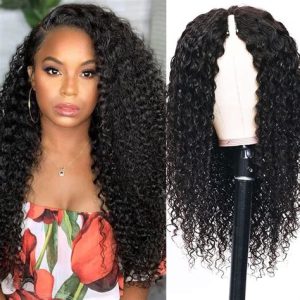Long Wigs 2025: Lace Front vs Synthetic
Introduction
Lace front and synthetic wigs are popular hairpieces that offer different advantages and drawbacks. This article examines the key differences between lace front and synthetic wigs, including their materials, construction, styling options, lifespan, and cost. By exploring the pros and cons of each type, readers can make informed decisions when choosing a wig that meets their specific needs.

Materials and Construction
- Lace Front Wigs: Constructed with a delicate lace base that mimics the scalp, creating a natural-looking hairline. Human hair or synthetic fibers are then hand-tied or machine-sewn onto the lace.
- Synthetic Wigs: Made entirely of synthetic fibers, typically heat-resistant materials like Kanekalon or Toyokalon. The fibers are woven or knotted onto a cap made of nylon or a breathable mesh material.
Styling Options
- Lace Front Wigs: Allow for versatile styling options, including updos, braids, and ponytails. The lace base provides a secure hold, reducing slippage or movement.
- Synthetic Wigs: Offer limited styling options due to their heat-sensitive nature. Heat styling can damage the fibers, making it difficult to create intricate hairstyles.
Lifespan
- Lace Front Wigs: With proper care and maintenance, lace front wigs can last up to 6-12 months or even longer. They require gentle washing and conditioning to preserve the delicate lace and extend their lifespan.
- Synthetic Wigs: Have a shorter lifespan of 3-6 months, as the fibers can become frizzy or tangled over time. Heat styling can further reduce their lifespan by damaging the fibers.
Cost
- Lace Front Wigs: Typically more expensive than synthetic wigs, ranging from $200 to $1,000 or more, depending on the quality of the materials and craftsmanship.
- Synthetic Wigs: Affordable option, with prices ranging from $20 to $100, making them a budget-friendly choice for those who want to experiment with different hairstyles without breaking the bank.
Pros and Cons
Lace Front Wigs
- Pros:
- Natural-looking hairline
- Versatile styling options
-
Longer lifespan with proper care
-
Cons:
- More expensive
- Requires gentle handling and maintenance
- Can be prone to damage if not handled properly
Synthetic Wigs
- Pros:
- Affordable
- Easy to style and maintain
-
Can withstand heat styling
-
Cons:
- Unnatural-looking hairline
- Limited styling options
- Shorter lifespan than lace front wigs
Common Mistakes to Avoid
- Over-washing lace front wigs: Excessive washing can weaken the lace and cause it to tear or lose its elasticity.
- Using harsh chemicals on synthetic wigs: Harsh chemicals can damage the synthetic fibers, making them frizzy or brittle.
- Heat styling synthetic wigs at high temperatures: Heat can irreversibly damage synthetic fibers, causing them to melt or curl unnaturally.
- Brushing synthetic wigs when wet: Brushing wet synthetic wigs can cause tangles and breakage.
- Storing wigs improperly: Store wigs on a wig stand or mannequin to prevent tangles and preserve their shape.
Future Trends and Innovations
The wig industry is constantly evolving, with new innovations and trends emerging regularly. Some potential future trends and areas for improvement include:
- Lace front wigs with improved breathability: Advanced lace materials that allow for better airflow and reduce scalp irritation.
- Synthetic wigs with advanced heat resistance: Fibers that can withstand higher temperatures without damage, allowing for greater styling versatility.
- Custom-made wigs: Using 3D scanning technology to create wigs that are tailored to the wearer’s exact head shape and size.
- AI-powered wig styling apps: Apps that provide personalized styling recommendations and tutorials based on the wearer’s hair texture, face shape, and lifestyle.
- Sustainable wigs: Wigs made from eco-friendly materials or recycled fibers, reducing environmental impact.
Conclusion
Choosing between a lace front wig and a synthetic wig ultimately depends on individual needs and preferences. Lace front wigs offer a more natural appearance and styling versatility, but come at a higher cost and require more care. Synthetic wigs are an affordable and easy-to-style option, but have a shorter lifespan and limited styling options. By understanding the key differences between these two types of wigs, shoppers can make an informed decision that meets their specific requirements.













